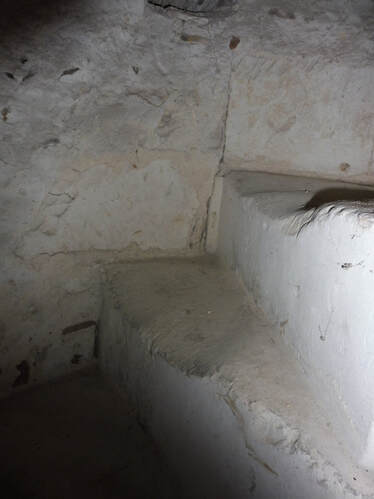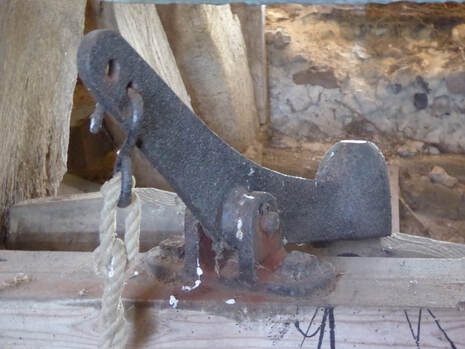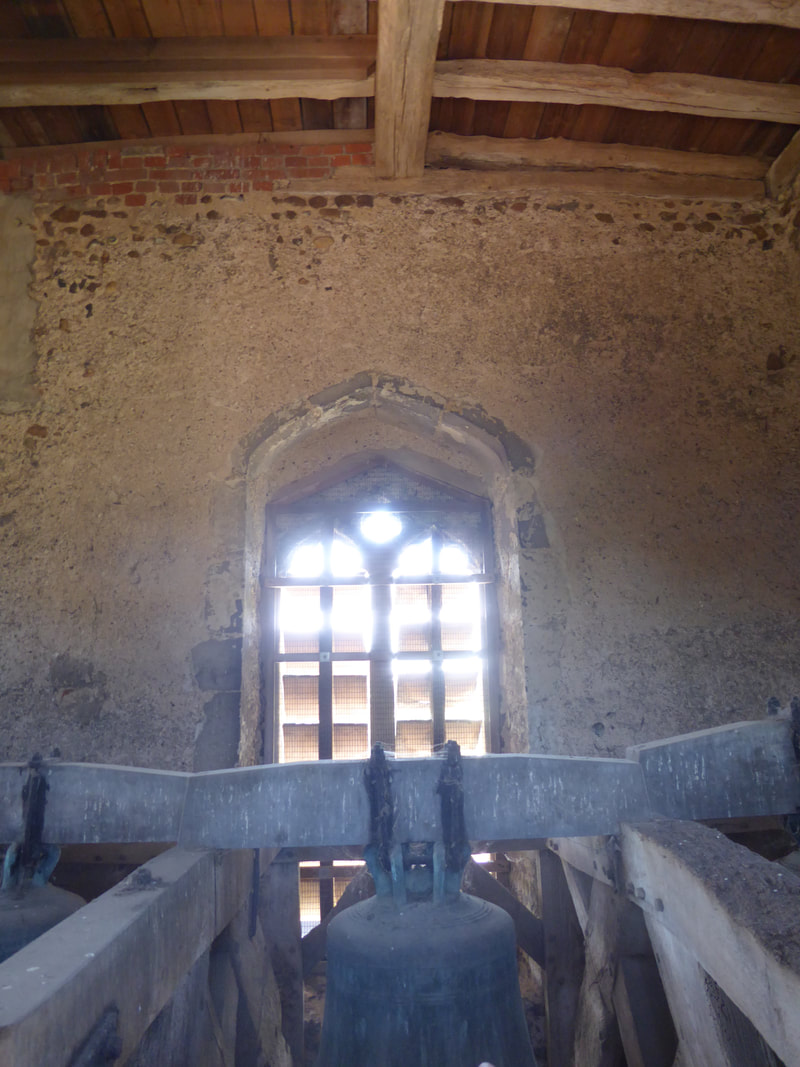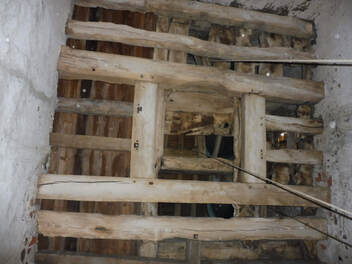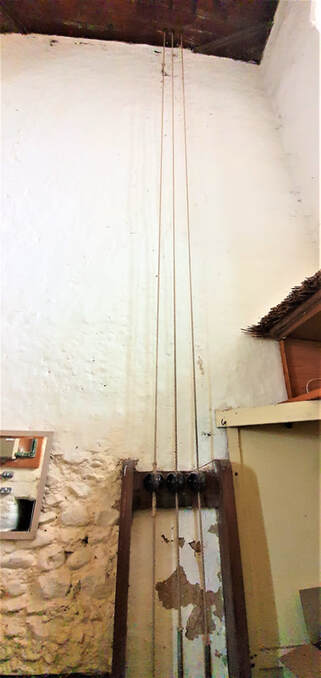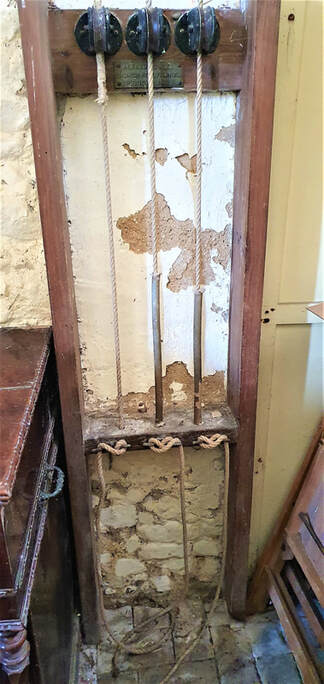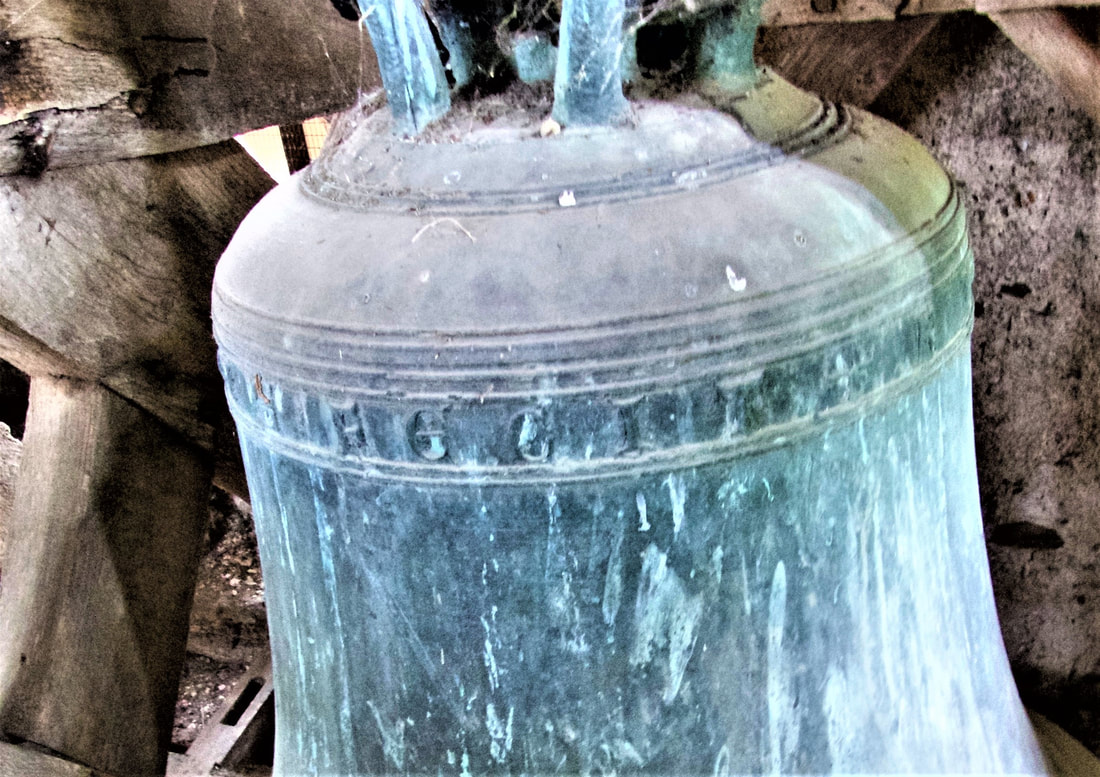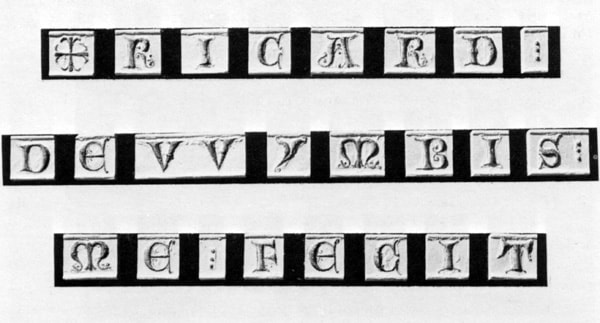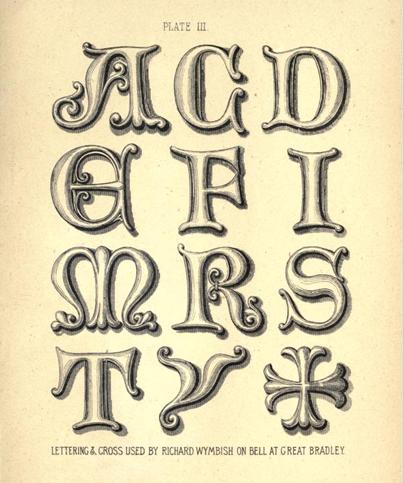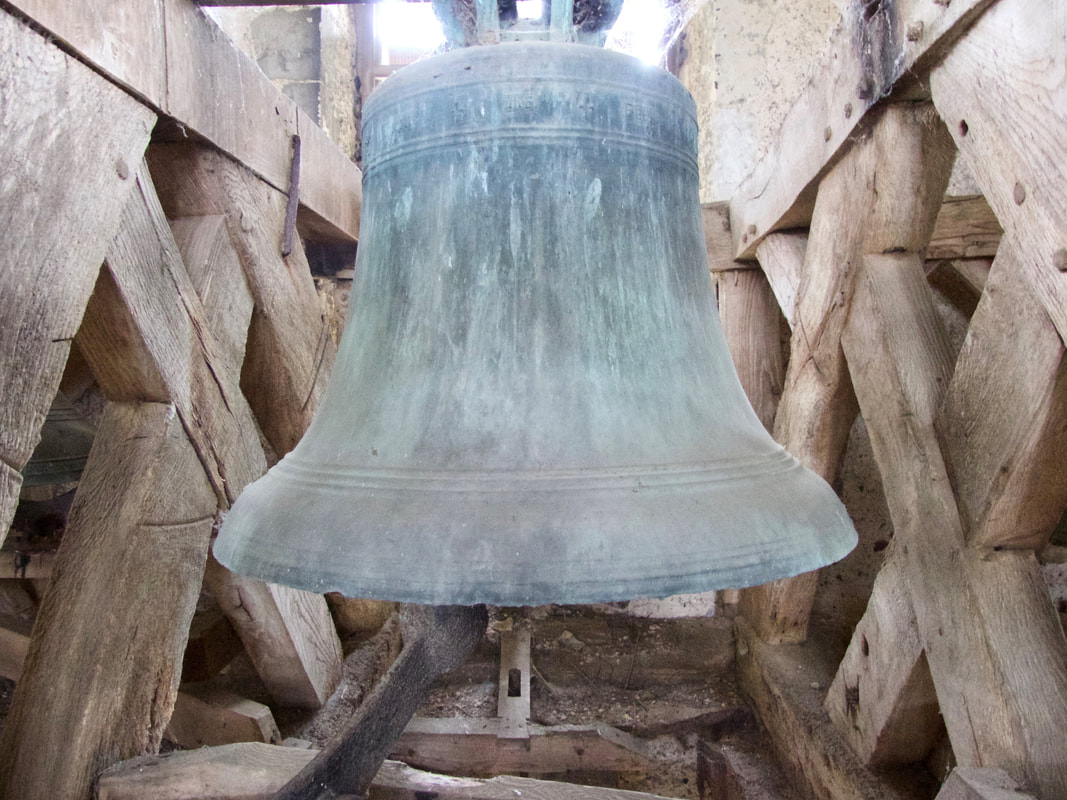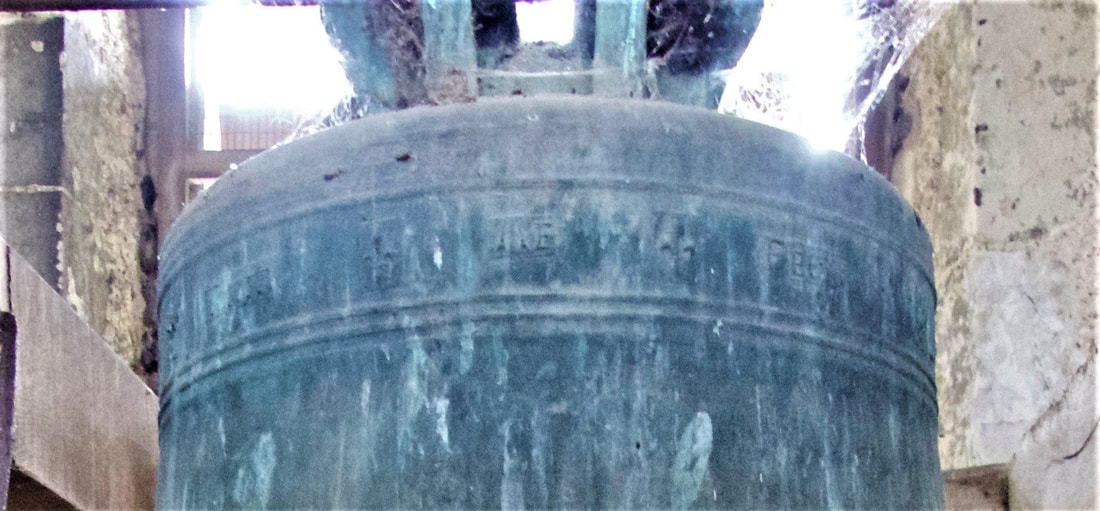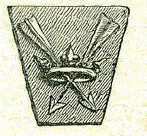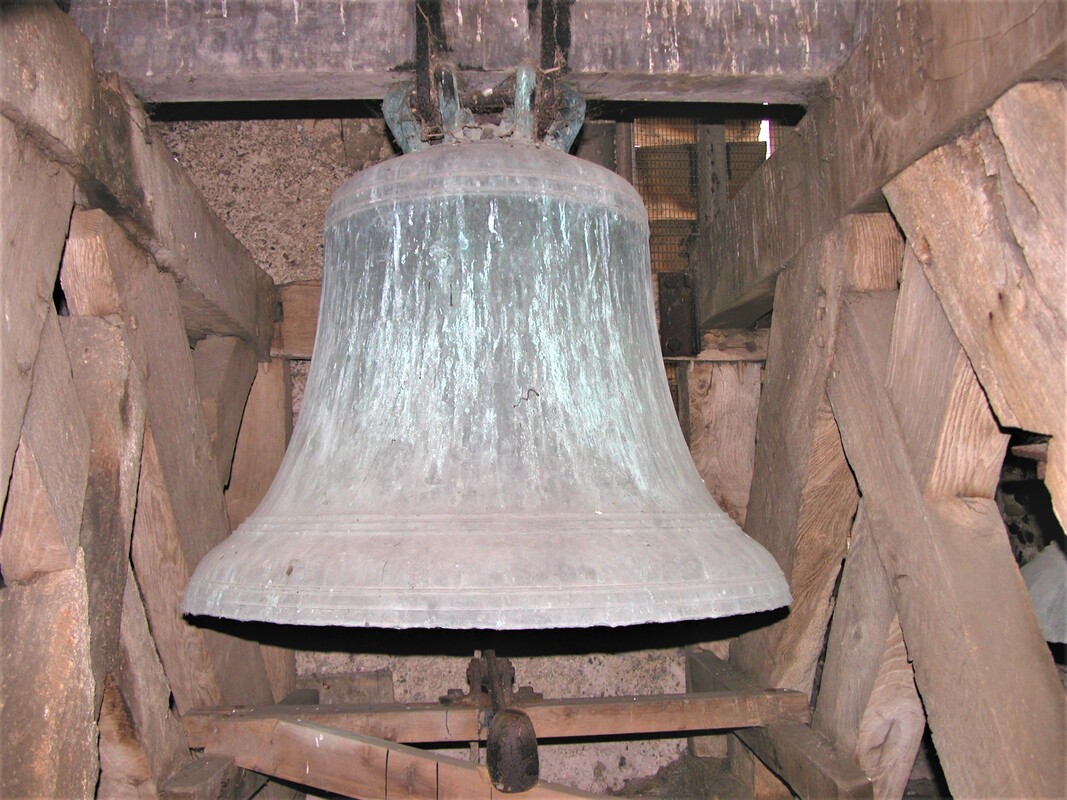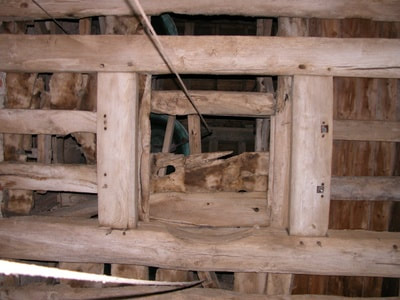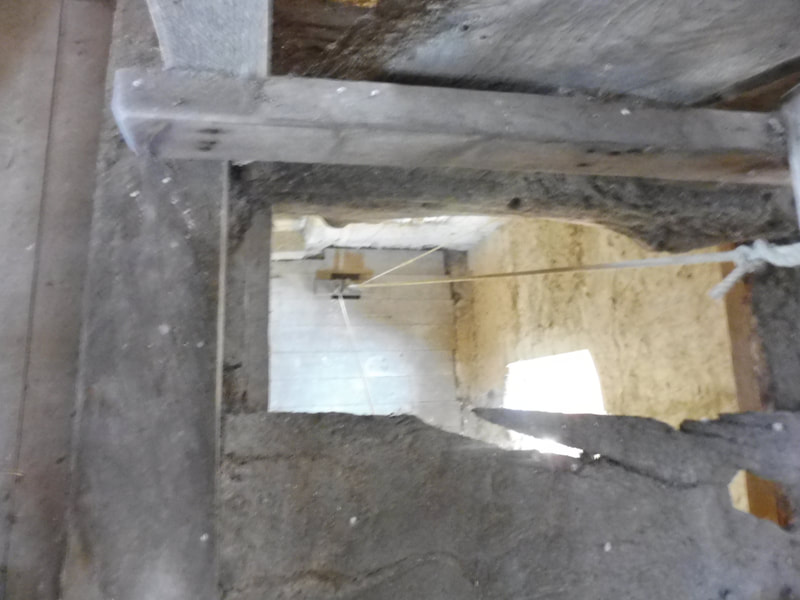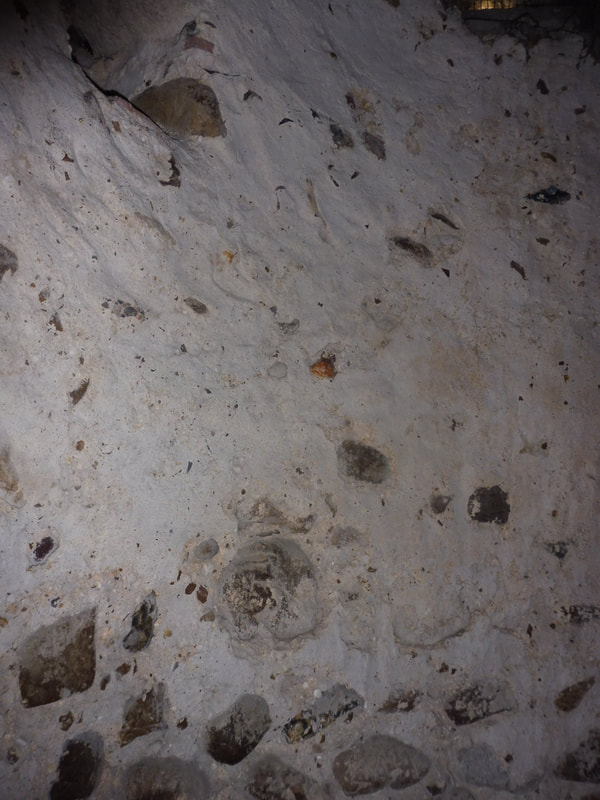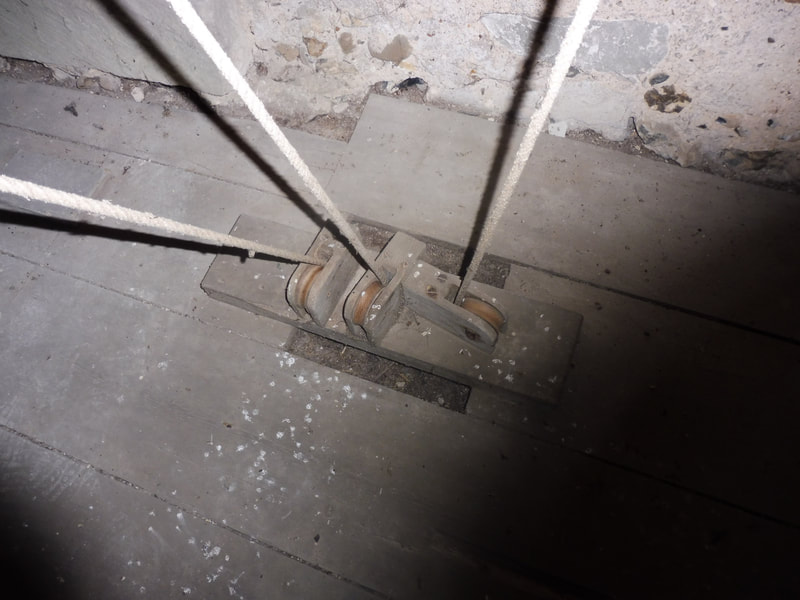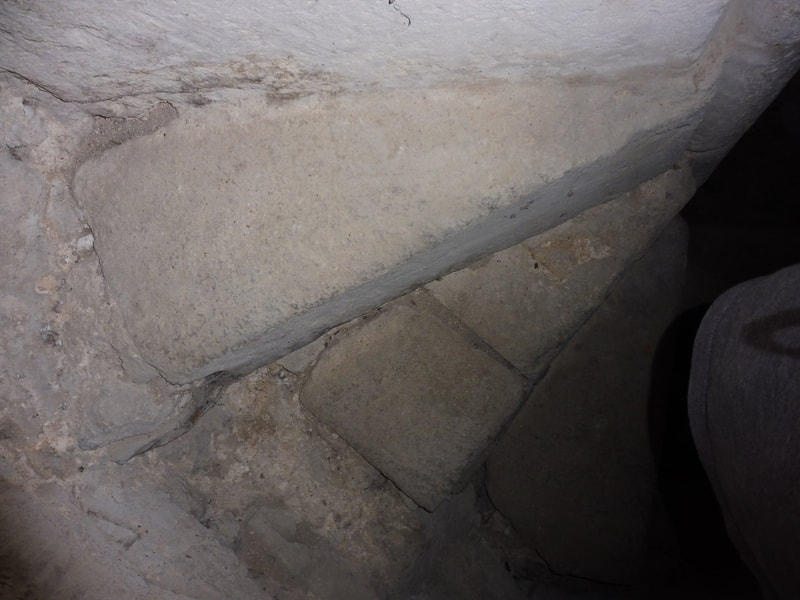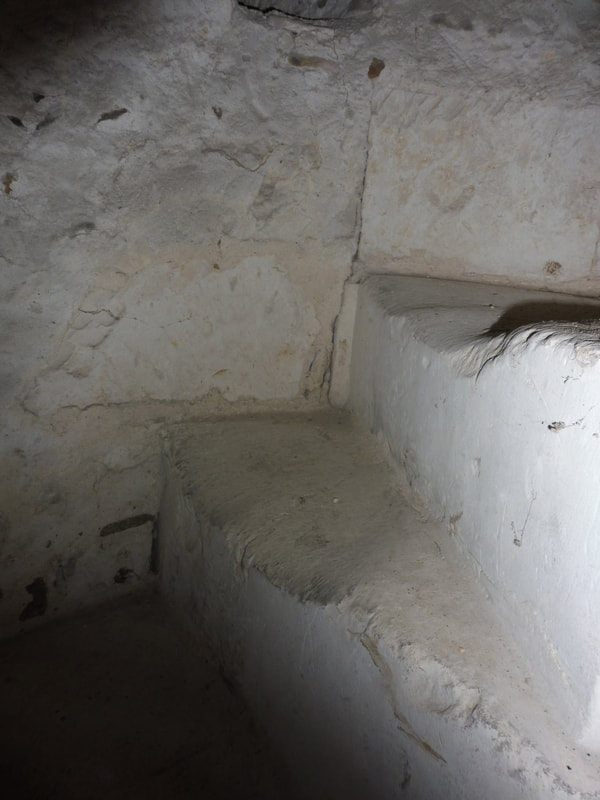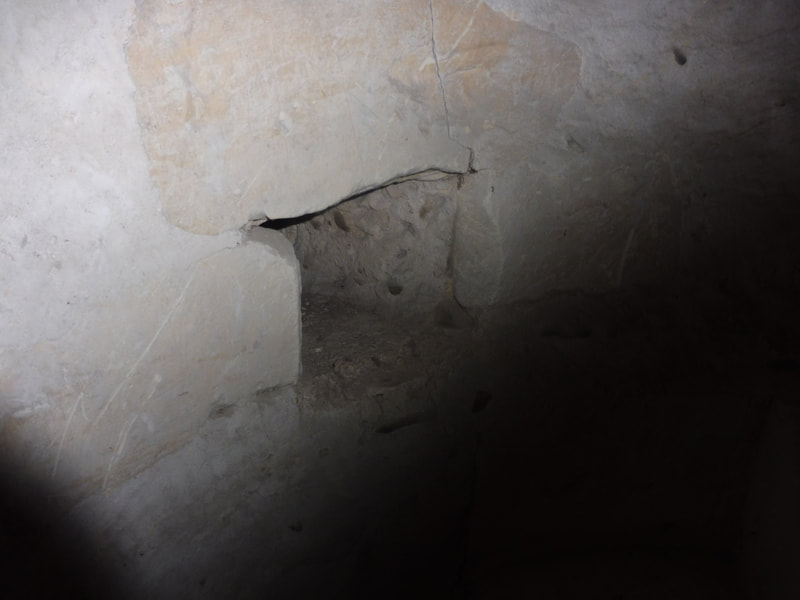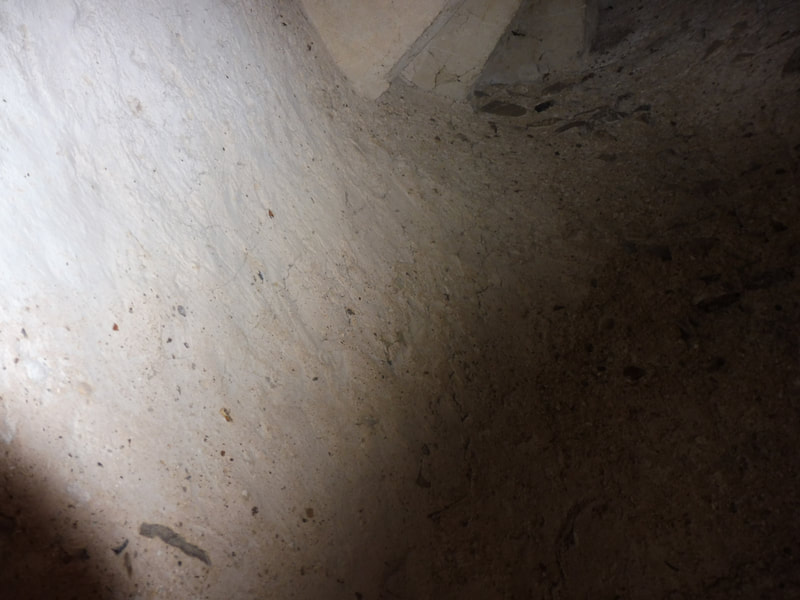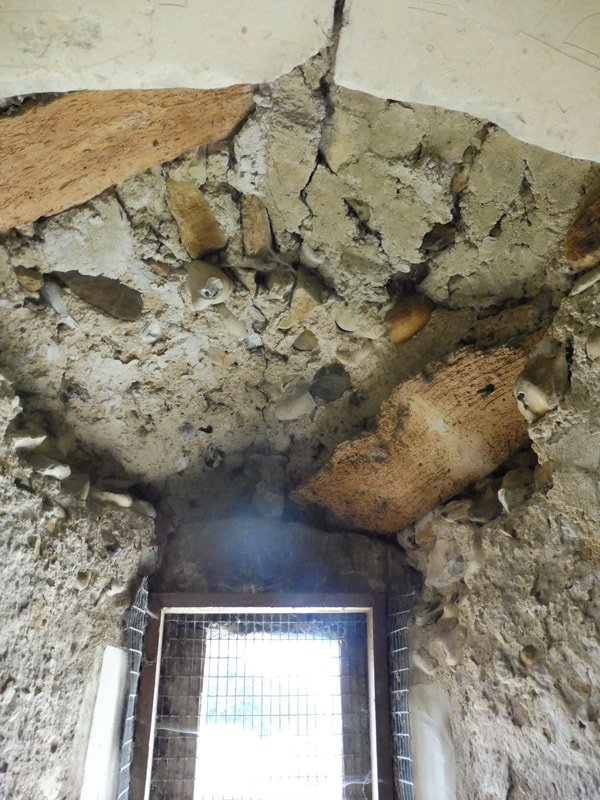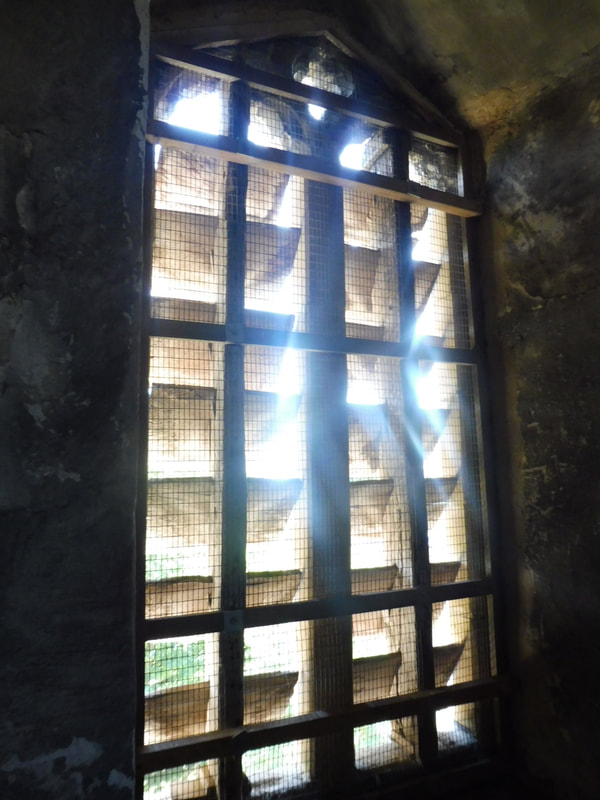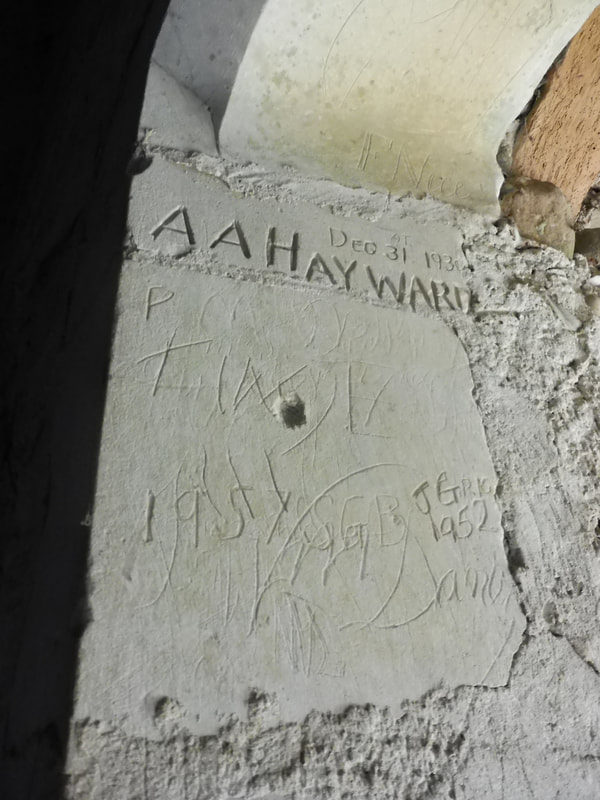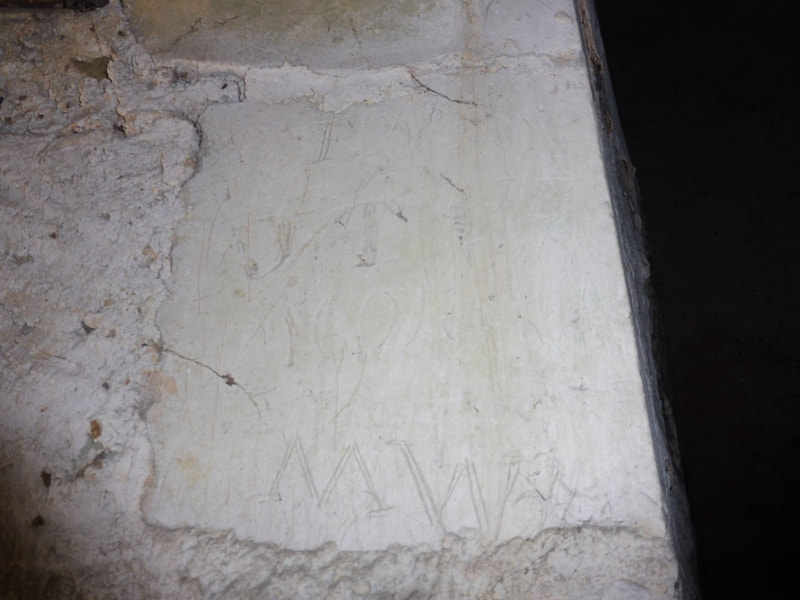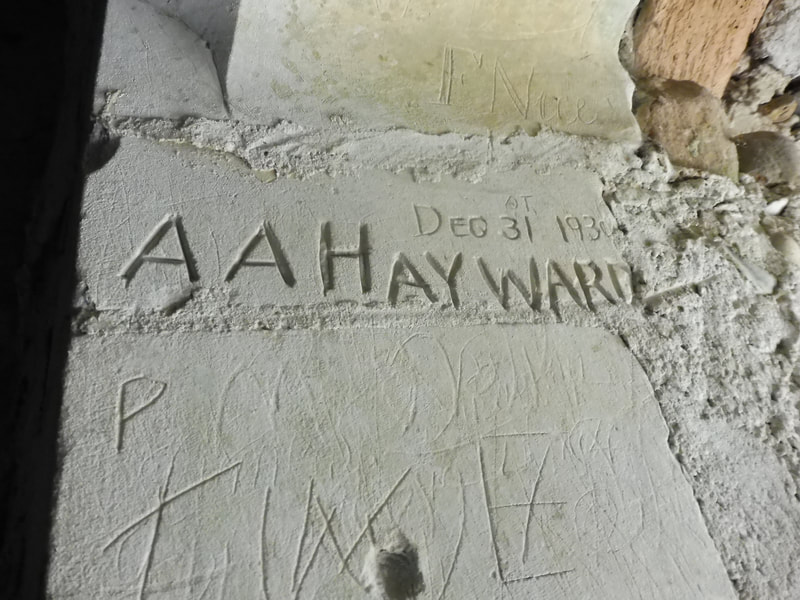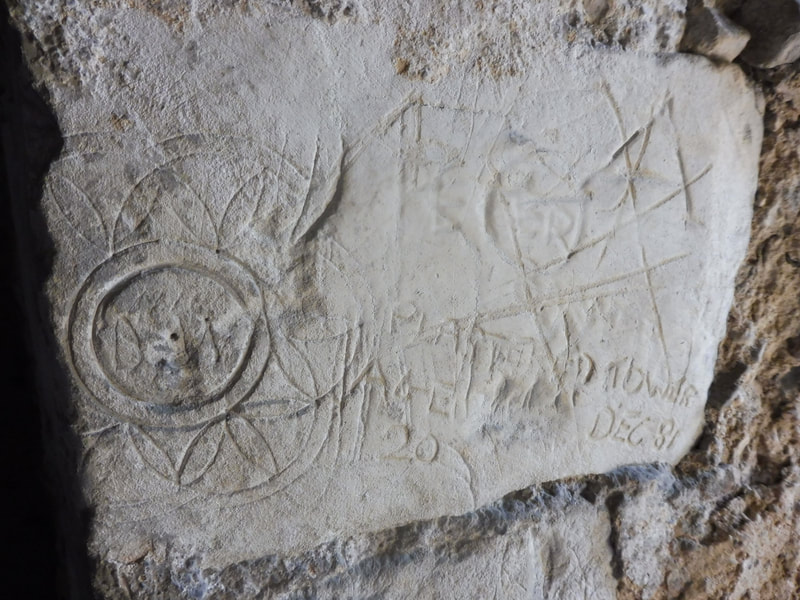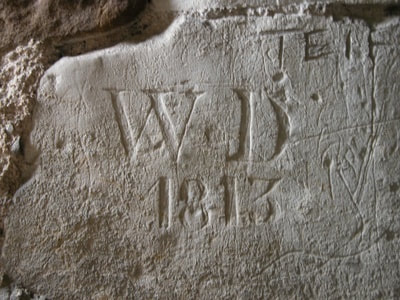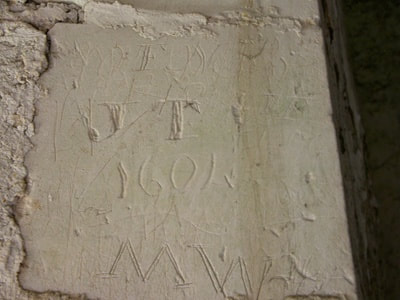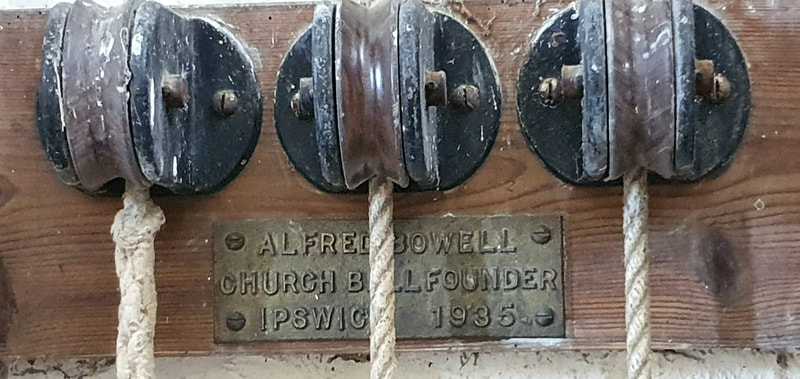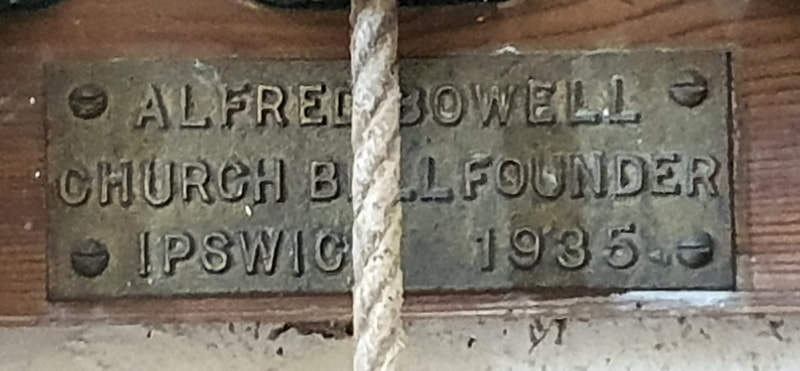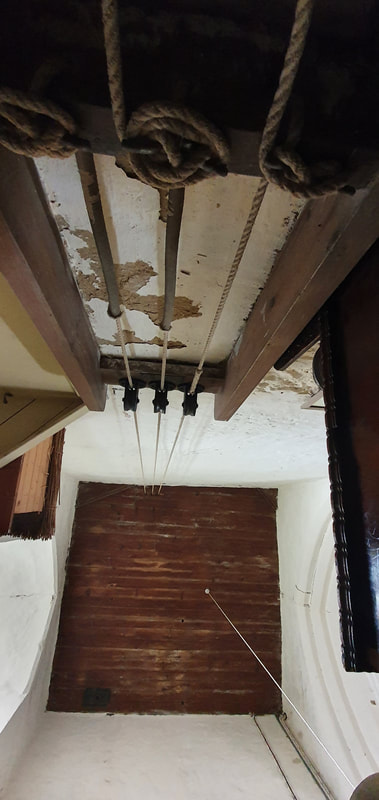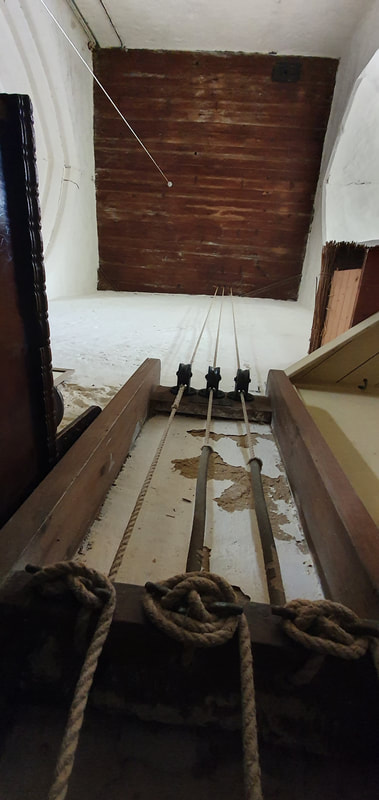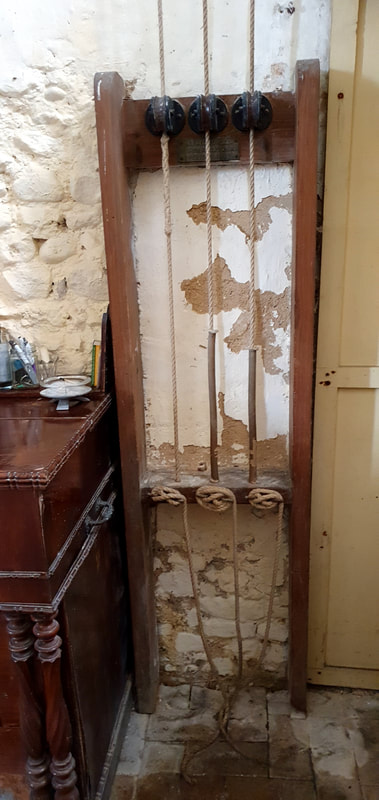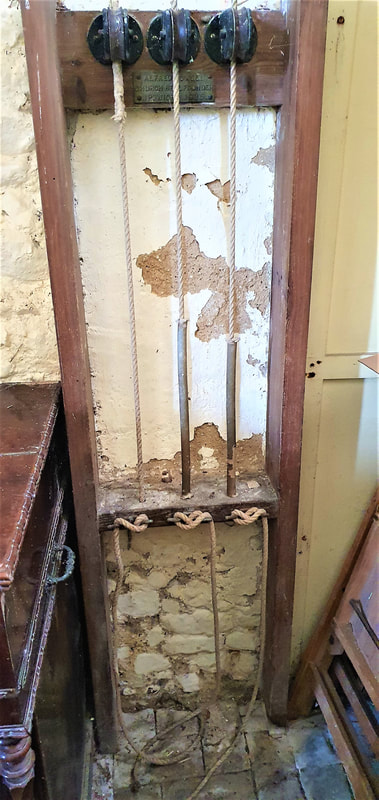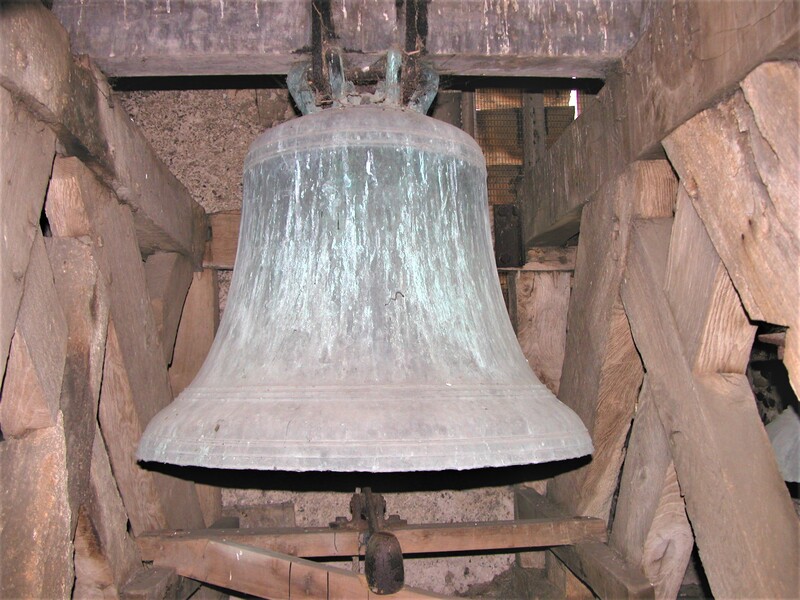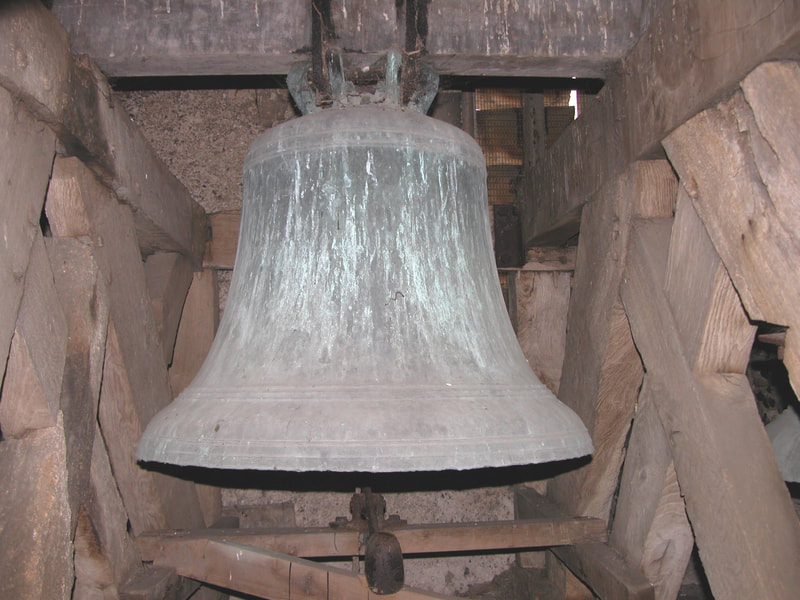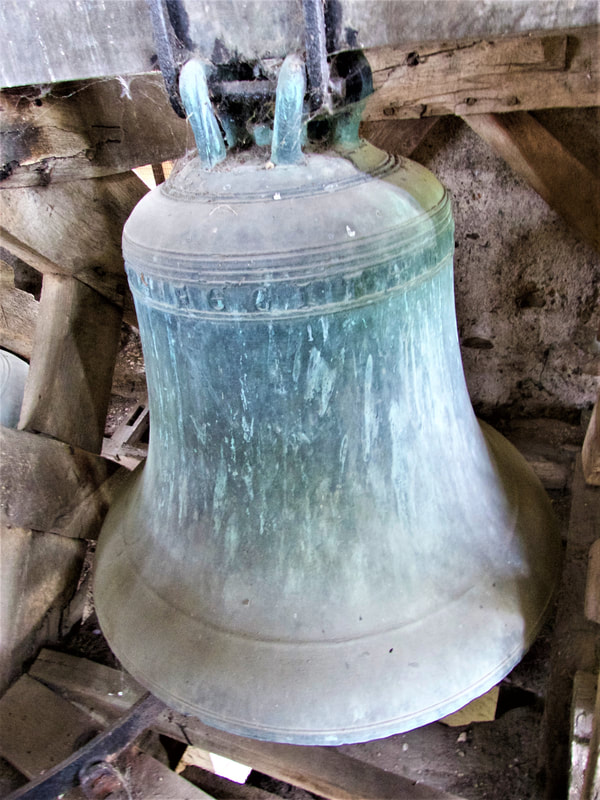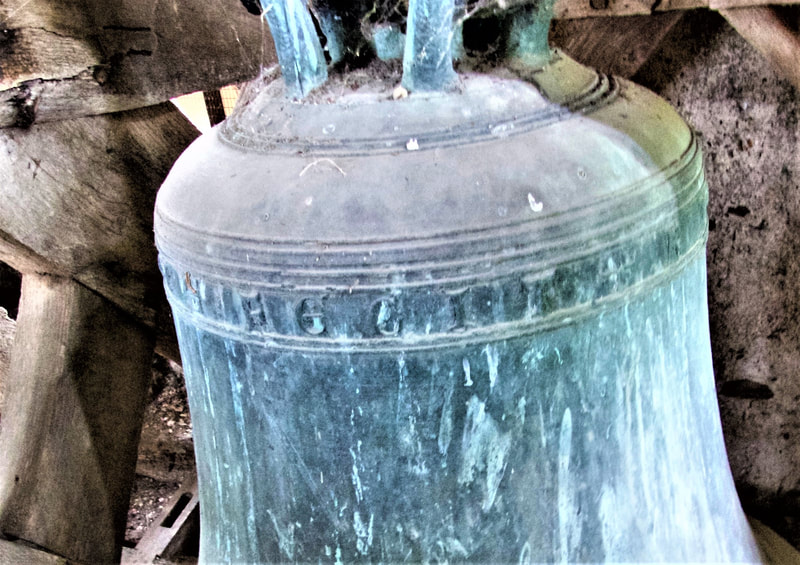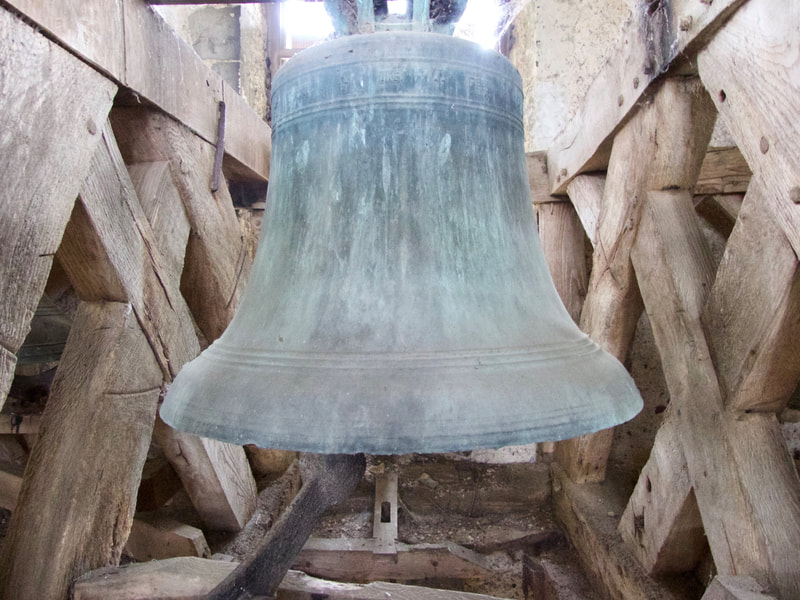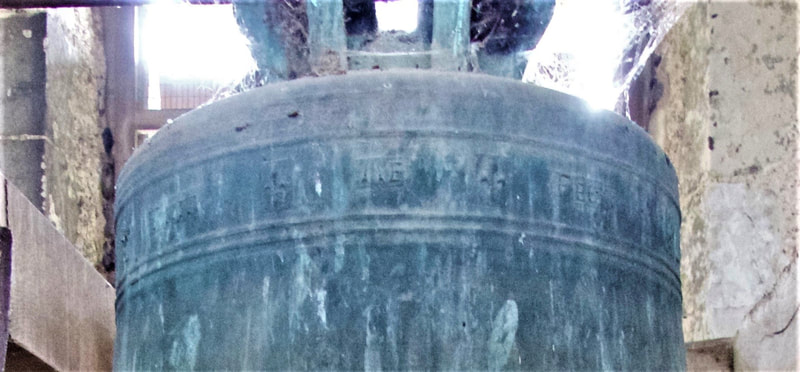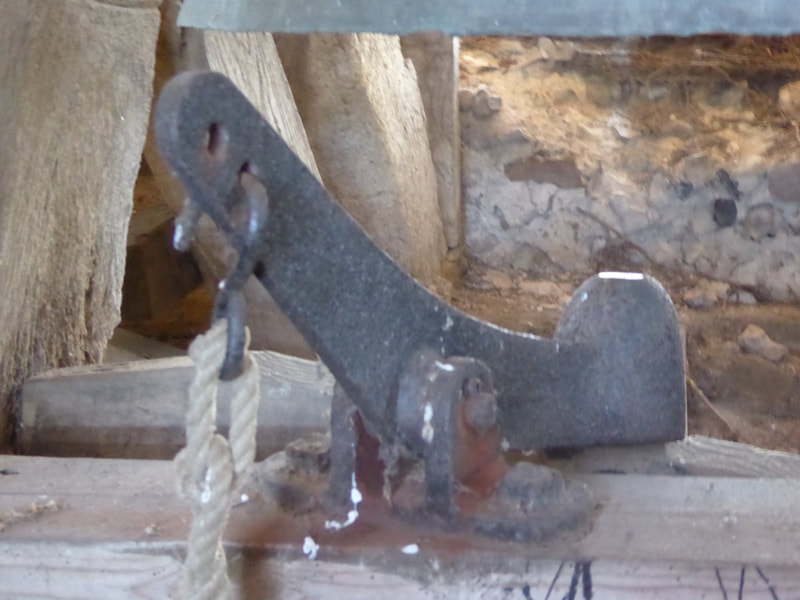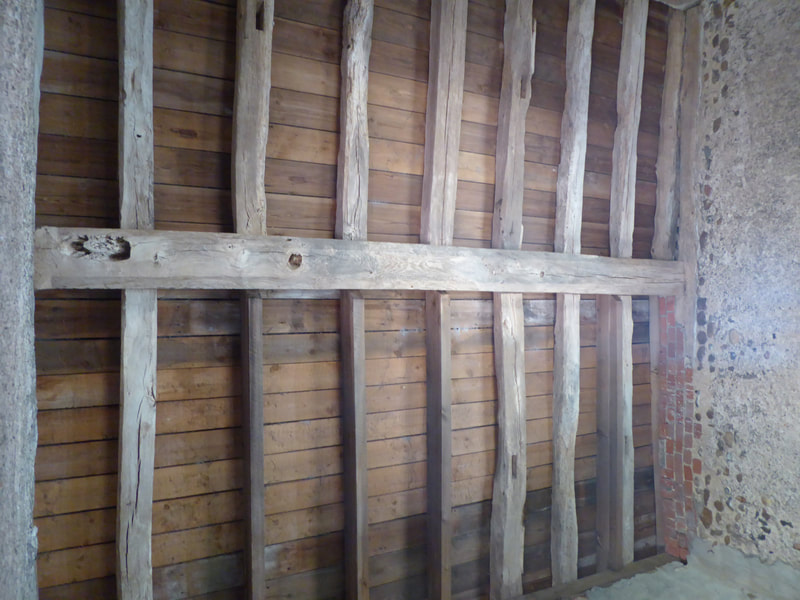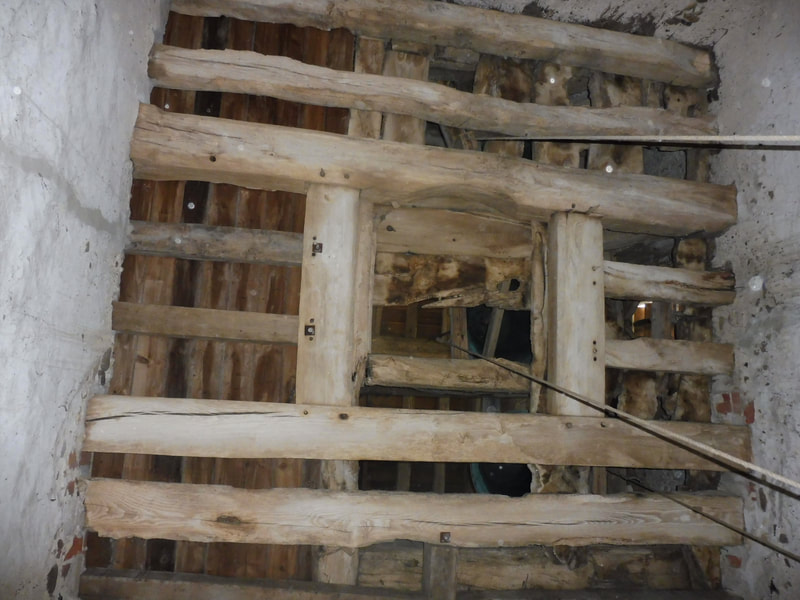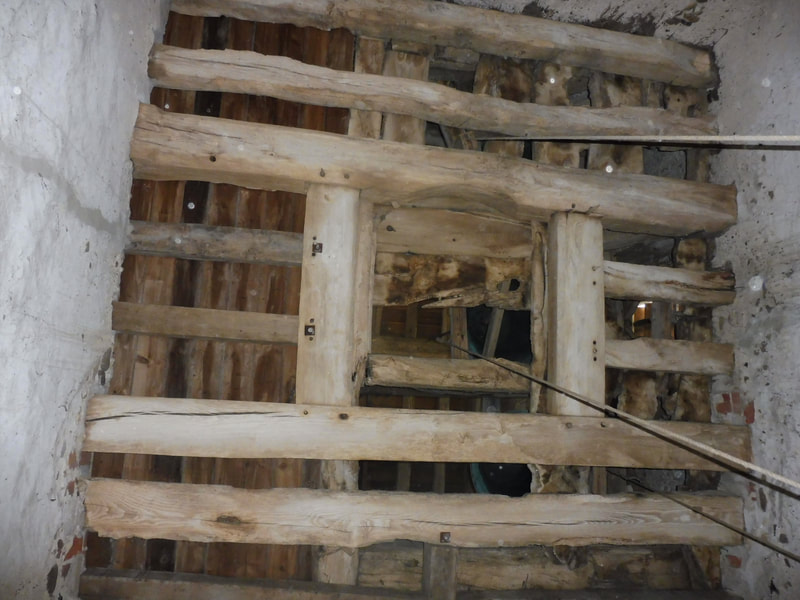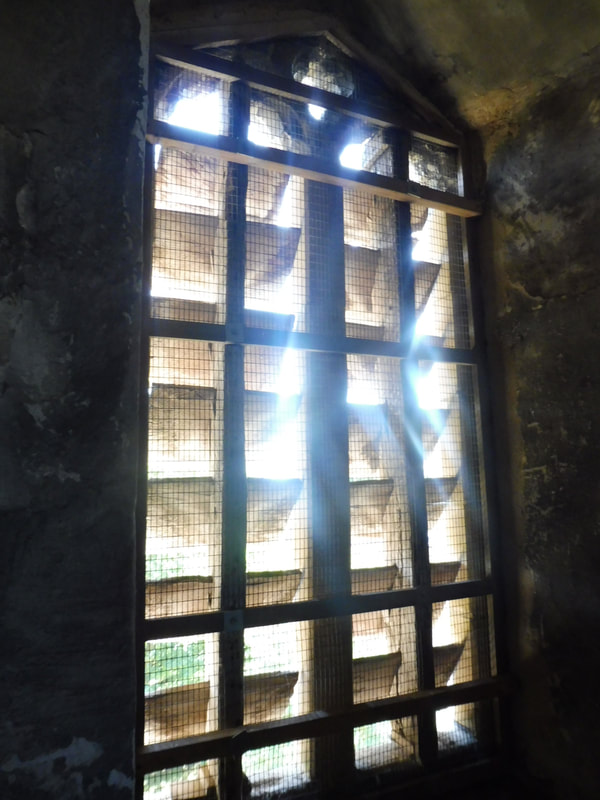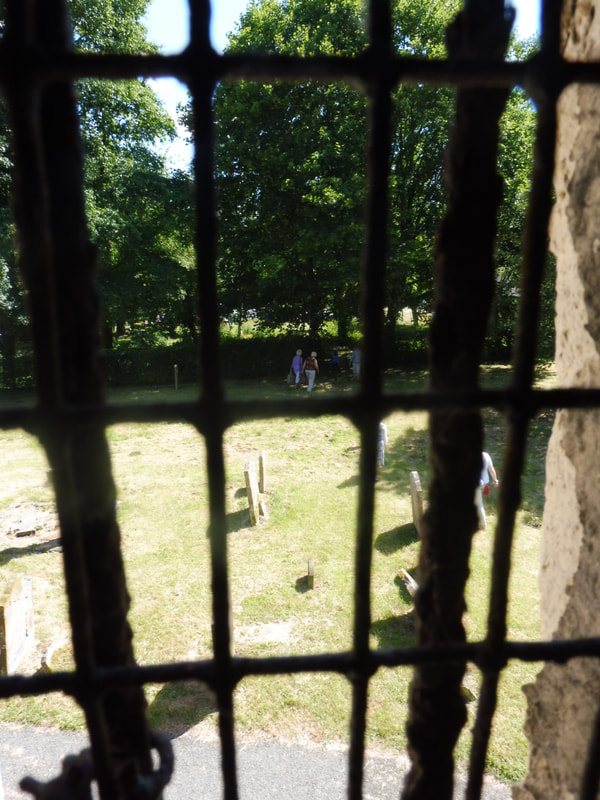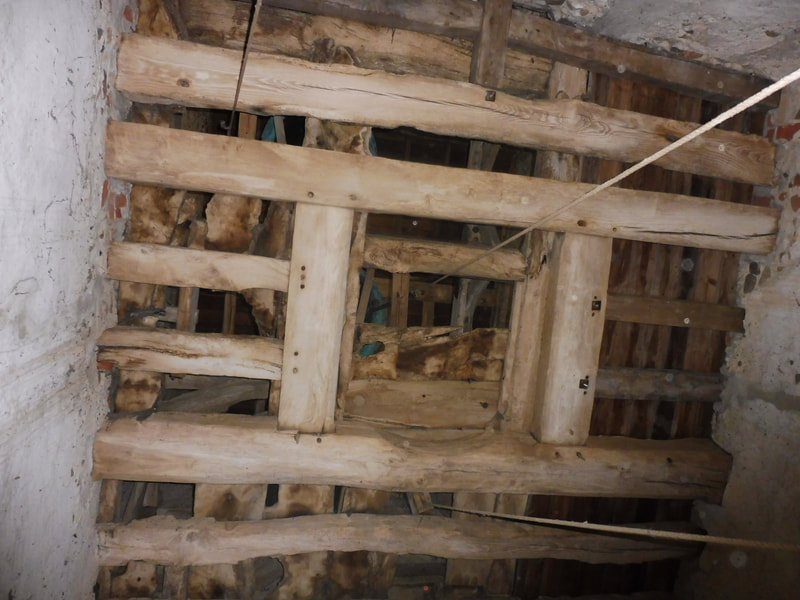Great Bradley Church Bells
The three bells in the church tower as they were made between the 14th and 16th Century. The tower was built in the 14th Century and the oldest bell is from the same period, about 1310, but the youngest is from 1575, when Queen Elizabeth I was on the throne.
|
A stone spiral staircase leads from the base of the tower to the ringing chamber and up on to the roof.
The chamber is about 13 ½ feet square with an oak-beamed roof and is illuminated on three sides by glassless windows. The bells are suspended from an elm beam fixed to an oak frame. The bells are known as being ‘hung dead’ because they do not swing and the beam is called a ‘headstock’ if the bells are swung and a ‘deadstock’ if not. The frame is 10 inches in diameter, runs East-West and is set into the walls of the tower. The bells are rung by iron hammers hitting the outside of south side of the bells (i.e. the bells are not swung). The hammers are moved by pulling on ropes that link the hammer to the ‘bell-pull’ in the base of the tower and to enable this, the ringing chamber floor is slatted so that the ropes can pass through. |
|
The bell pull in the base of the tower on the south side and was installed in 1935 by Alfred Bowell, founders and bell hangers, of Ipswich.
Pulling on the ropes lifts a hammer and when released the hammer strikes the bell to chime. The musical notes of the three bells are A-, B+ and C sharp. Maintenance on the bells took place, at least, in in 1935 by Bowell’s of Ipswich and by the Diocesan Inspector, Ranald Clouston in 1961 and 1981/82. The inspections have found the bells and the ringing chamber in reasonable condition considering they’ve been there for some 500 - 700 years! The main changes made were to ensure that the hammers hit the thickest part of the bell, treating the wood to prevent beetles and adjusting some of the fixings. |
tenor bell
IPGM Dickinson FSA, suggests that that the tenor bell was cast in about 1310, and certainly between 1290 and 1315. It weighs over 7 hundredweight, is over 35 inches in diameter and the musical note is A-.
This bell almost certainly dates from the early years of the 14th century and at about 700 years old is one of the oldest church bells in the country. It is certainly one of the three oldest church bells known in Suffolk (the oldest is probably at Hadleigh, dated to around 1280, with the oldest surviving bell in England being from 1219).
This bell almost certainly dates from the early years of the 14th century and at about 700 years old is one of the oldest church bells in the country. It is certainly one of the three oldest church bells known in Suffolk (the oldest is probably at Hadleigh, dated to around 1280, with the oldest surviving bell in England being from 1219).
The bell in St Mary’s was made by Richard de Wymbis of London, who was known to have been working as a bell founder by 1290. Wimbish is a small village not too far away near Saffron Walden, which is probably where he was born. There is an inscription cast round the top of the bell inscribed 'RICHARD DE WYMBIS ME FECIT' meaning ' Richard De Wimbis made me'. Only five of his bells remain and the one in St Mary’s is the largest.
middle bell
The second bell dates from 1576. It weighs over 6 hundredweight, is 33 inches in diameter and the note is B+. It has an inscription stating it was made in Bury St Edmunds by the Stefanyz [Stephen] Tonni workshop, which established in 1570.
The inscription on the bell reads “ De Byri Zanti Edmondi Stefanz Tonni. Me Fecit WL 1576” meaning “From Bury St Edmunds. Stephen Toni made me in 1576”. W.L. stands for William Land who was foreman at the Tonni factory and so is acknowledged as the founder (maker) of the bell.
The inscription also has the motif of a pair of arrows through a crown. This is the crest of St Edmund (and now used on the flag of Suffolk) and was the Tonni foundry mark. The church at nearby Woodditton has two bells made by the same foundry, one of which was previously in Westerly Waterless church until the round tower collapsed in 1855
The inscription on the bell reads “ De Byri Zanti Edmondi Stefanz Tonni. Me Fecit WL 1576” meaning “From Bury St Edmunds. Stephen Toni made me in 1576”. W.L. stands for William Land who was foreman at the Tonni factory and so is acknowledged as the founder (maker) of the bell.
The inscription also has the motif of a pair of arrows through a crown. This is the crest of St Edmund (and now used on the flag of Suffolk) and was the Tonni foundry mark. The church at nearby Woodditton has two bells made by the same foundry, one of which was previously in Westerly Waterless church until the round tower collapsed in 1855
treble bell
The third bell, the treble bell, bears no inscription and the foundry is unknown, but authorities claim that this is almost certainly a pre-Reformation bell (i.e. pre 1540) but according to one of the repairers, no older than 1300. It weights over 5 hundredweight, is over 30 inches in diameter and the note it rings is C sharp.
For more information on the bells and their state of repair click on the links below to see a fascinating documents recording the care and maintenance of the bells.
| 1950s_historical_info_about_the_church_bells___de_wimbis__1_.pdf | |
| File Size: | 3836 kb |
| File Type: | |
| 1960_1981_1982_description_of_great_bradley_church_bells.pdf | |
| File Size: | 245 kb |
| File Type: | |
| 1983_great_bradley_church_bells_correspondence_2.pdf | |
| File Size: | 3674 kb |
| File Type: | |
